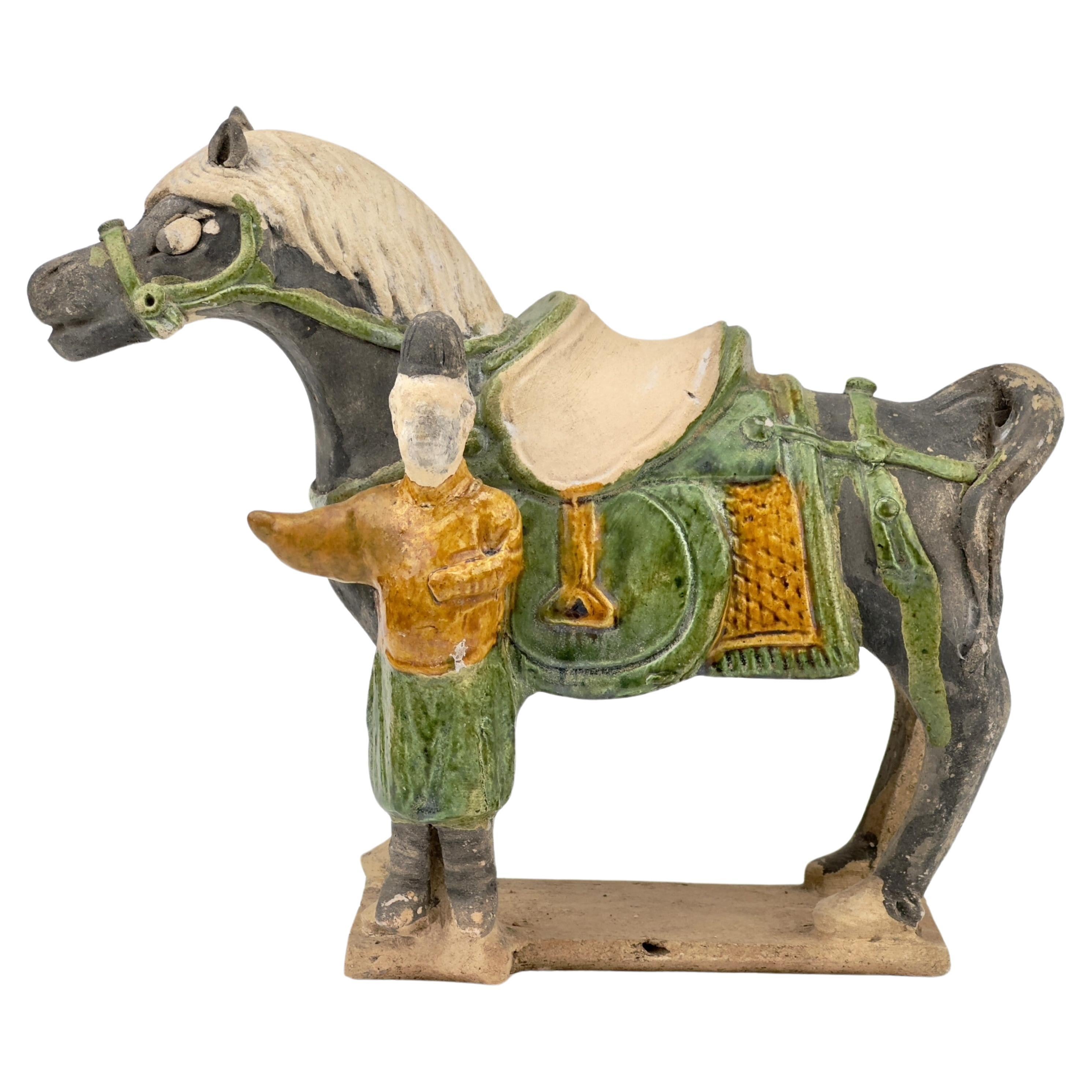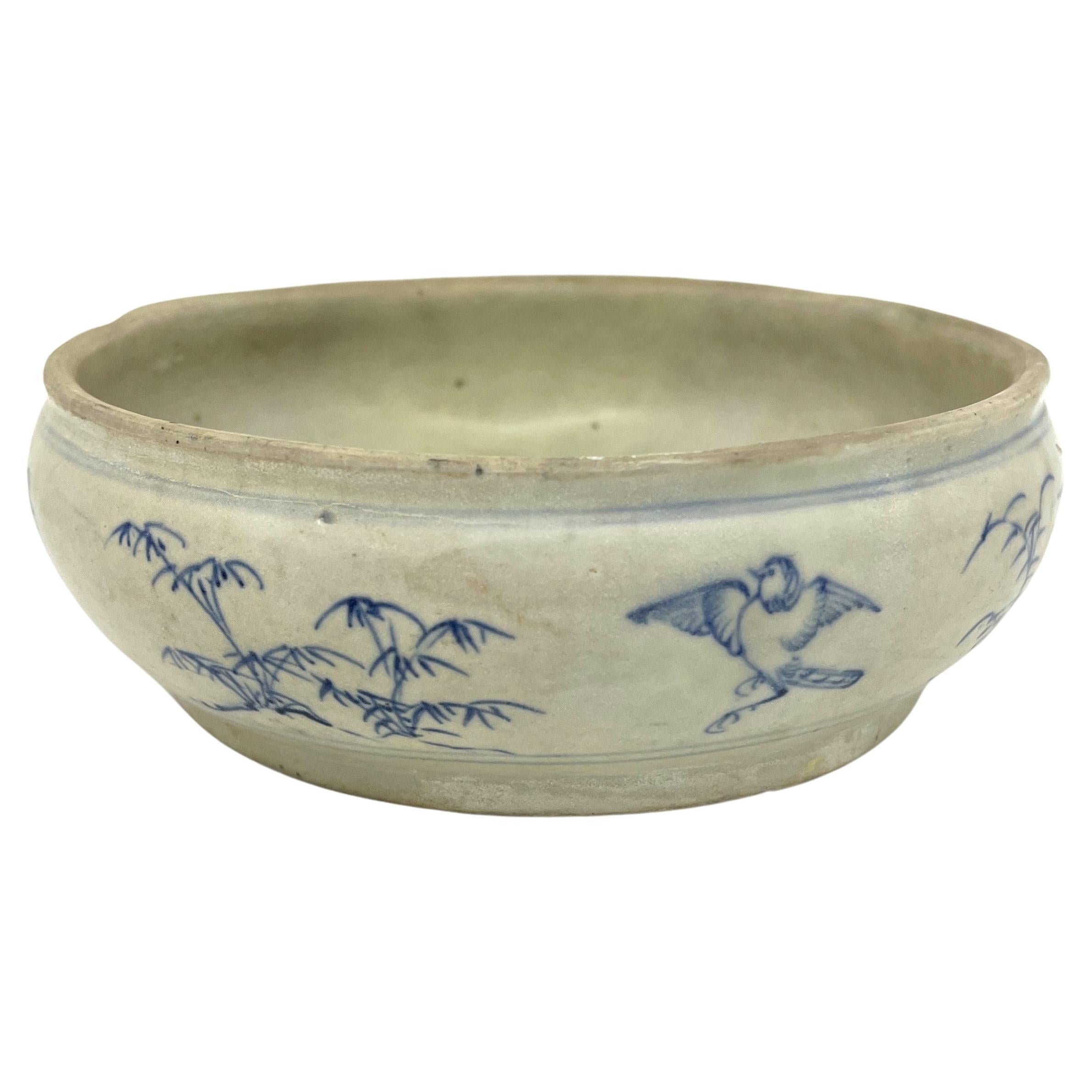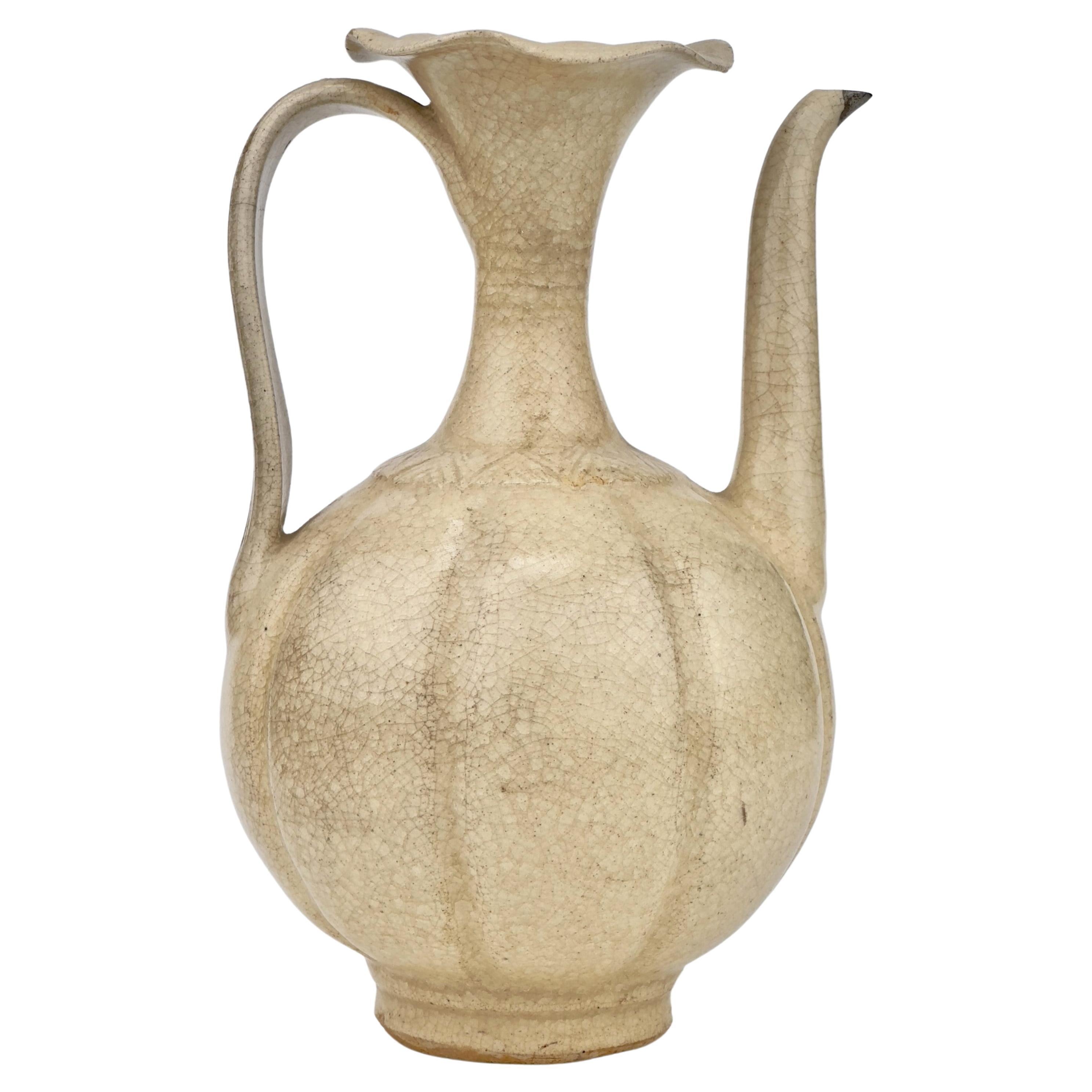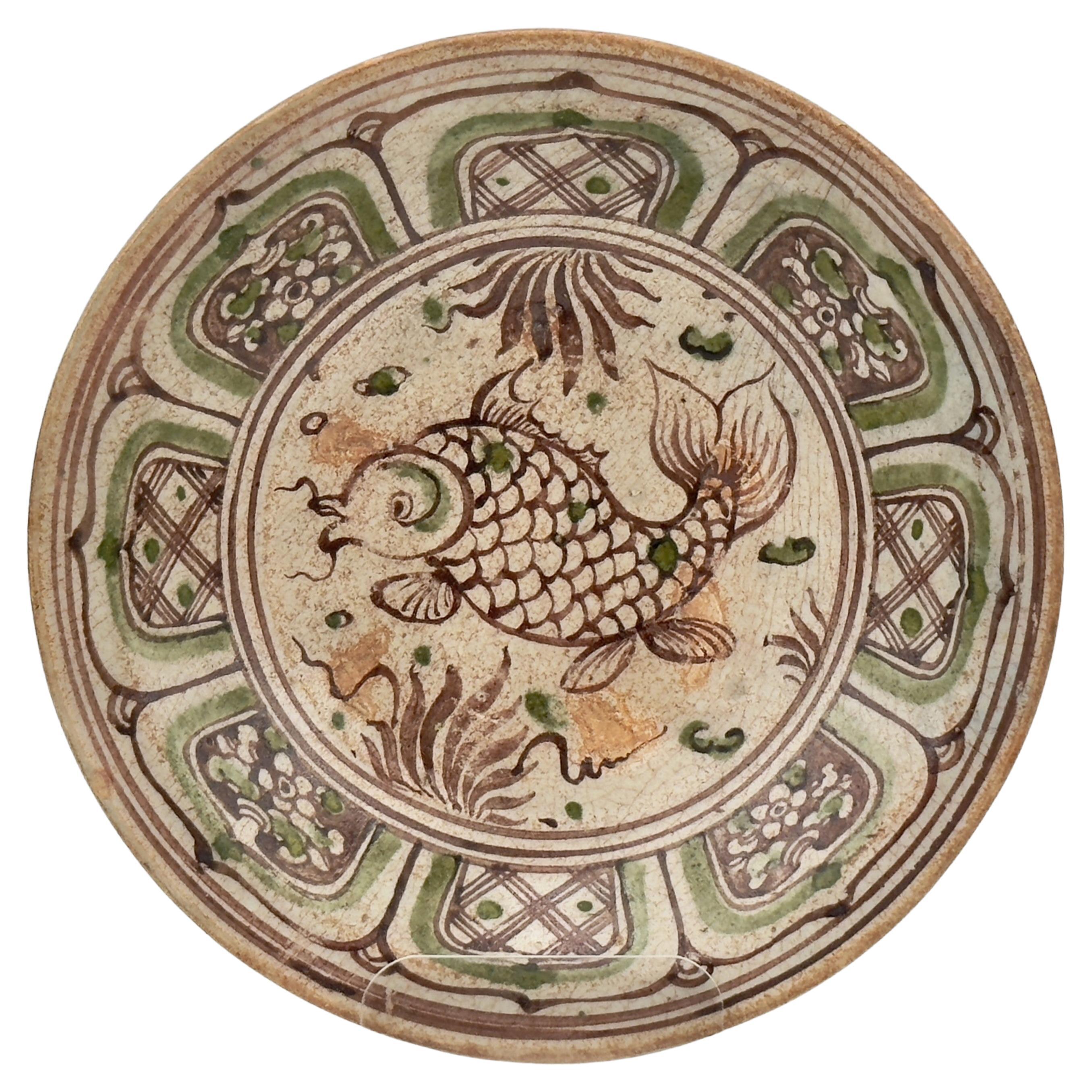Items Similar to Cloisonné Enamel Vase, Early Ming Dynasty(15th century)
Want more images or videos?
Request additional images or videos from the seller
1 of 6
Cloisonné Enamel Vase, Early Ming Dynasty(15th century)
About the Item
This exquisite vase is a fine example of Ming Dynasty cloisonné, an era renowned for revolutionizing the cloisonné technique with intricate design and vibrant enamel work. The cylindrical vase is meticulously adorned with floral motifs, each bloom a symbol of natural beauty and harmony. The vivid colors are typical of the Ming palette, with a predominant turquoise blue background that was favored during the period. Such vases were often commissioned by the imperial court, reflecting the high cultural esteem for cloisonné work.
Period: Early Ming Dynasty(景泰, 1449-1457)
Type: Vase
Medium: Cloisonné Enamel
Provenance: The piece was acquired in Japanese Gallery in the year mid-2000.
Reference :
1) THE MET - Accession Number: 29.110.37
2) Bonhams Hongkong 2 December 2021 - COLOUR / IMPACT Lot 28
* Cloisonné Enamel
Cloisonné, an ancient technique perfected in China, encapsulates the allure of both metalwork and ceramic artistry. The intricate process, where metal wires create compartments (cloisons) on a metal vessel, filled with enamel, results in stunning pieces that are both vibrant and enduring. The colors and patterns preserved in the enamel, achieved through multiple firings, are reminiscent of China's rich cultural tapestry. Owning a cloisonné piece is like holding a fragment of history—each a narrative of bygone sophistication and a testament to the craftsmen's dedication to beauty and excellence. It's not merely an object, but a bridge to a storied past, making cloisonné works highly sought after by connoisseurs and collectors alike.
- Dimensions:Height: 13.9 in (35.3 cm)Diameter: 4.14 in (10.5 cm)
- Style:Ming (Of the Period)
- Materials and Techniques:
- Place of Origin:
- Period:
- Date of Manufacture:15th century
- Condition:Minor fading.
- Seller Location:seoul, KR
- Reference Number:1stDibs: LU9577237750852
About the Seller
New to 1stDibs
Joined in the past six months.
4.5
Vetted Seller
These experienced sellers undergo a comprehensive evaluation by our team of in-house experts.
Established in 1999
1stDibs seller since 2023
Typical response time: <1 hour
- ShippingRetrieving quote...Ships From: seoul, Korea South
- Return PolicyA return for this item may be initiated within 10 days of delivery.
Auctions on 1stDibs
Our timed auctions are an opportunity to bid on extraordinary design. We do not charge a Buyer's Premium and shipping is facilitated by 1stDibs and/or the seller. Plus, all auction purchases are covered by our comprehensive Buyer Protection. Learn More
More From This SellerView All
- Annamese Cylindrical Jar, Vietnam, 11-15th centuryLocated in seoul, KRFamous annamese cylindrical jar with lid. Decor modeled in lotus petals, covered with a cream glaze. Dates : Presumably Ly Dynasty (11-13th century) Region : Vietnam Type : Jar Fou...Category
Antique 15th Century and Earlier Chinese Ming Antiquities
MaterialsStoneware
- Persian style Annamese stoneware, late 15th centuryLocated in seoul, KRStoneware decorated with Persian-style colors and patterns, and it is highly likely that this Annamese pottery intended for export was produced to meet Middle Eastern demand. Dates ...Category
Antique 15th Century and Earlier Chinese Ming Antiquities
MaterialsStoneware
- Annamese Blue and White Dish, circa 15th century.Located in seoul, KRA blue-and-white porcelain dish with a central floral motif, likely a lotus, which is a recurrent symbol in Asian art representing purity and beauty. The lotus is surrounded by concentric patterns of foliage and vines, typical of the blue-and-white ceramics that were prevalent during the Ming Dynasty. The cobalt blue used for the intricate designs stands out against the white background, giving the piece a timeless elegance. The design's fluidity and organic shapes suggest it was painted by a skilled artisan, making it a fine example of the artistry from the period when it was created. Dates : 15th century Le Dynasty Region : North Annam Type : Dish Found/Acquired : Southeast Asia , South China Sea, Hoi An Ship Reference : Double checked with reference to the original catalogue Butterfield Treasures Hoi An Hoard Auction Catalogs / San Francisco Butterfields 2000 * Vietnamese trade ceramics Around the mid-14th century, Vietnam developed its ceramics production technology by producing blue and white porcelain, and began to export it overseas. During this period, China Ming Dynasty implemented a policy of lifting the ban from 1371 to 1657 and restricted foreign trade. This served as a good opportunity in the trade history of Vietnamese ceramics, and ceramic exports...Category
Antique 15th Century and Earlier Vietnamese Ming Antiquities
MaterialsStoneware
- Rare annamese cream glazed ewer, Vietnam, 11-15th centuryLocated in seoul, KRFamous annamese cream glazed ceramic ewer covered with a cream glaze. Traces of excavation are clearly visible in the glaze. Dates : Presumably Ly Dynasty (11-13th century) Region ...Category
Antique 15th Century and Earlier Chinese Ming Antiquities
MaterialsCeramic, Stoneware
- Annamese stoneware pot, Hoi An Hoard, late 15th century.Located in seoul, KRThis ceramic piece beautifully captures the scene of a sparrow perched on a small branchs, depicted with a minimalist touch. The artist skillfully conveys the sense of intimacy as the sparrow approaches the slender twig. The simplicity of the design is evident in the clean lines and subtle details, allowing the viewer to focus on the essence of the moment. Dates : 15th century Le Dynasty Region : North Annam Type : Stoneware Pot Found/Acquired : Southeast Asia , South China Sea, Hoi An Hoard Reference : Butterfield Treasures Hoi An Hoard Auction Catalogs / San Francisco Butterfields 2000 * Vietnamese trade ceramics Around the mid-14th century, Vietnam developed its ceramics production technology by producing blue and white porcelain, and began to export it overseas. During this period, China Ming Dynasty implemented a policy of lifting the ban from 1371 to 1657 and restricted foreign trade. This served as a good opportunity in the trade history of Vietnamese ceramics, and ceramic exports...Category
Antique 15th Century and Earlier Vietnamese Ming Antiquities
MaterialsStoneware
- A Rare Gilted Annamese Blue and white Ewer, Circa 15th CenturyLocated in seoul, KRAlthough heavily influenced by the Chinese ceramic tradition, Vietnam materials and potting styles are unique. Technically not ‘porcelain’, which is translucent and pure white, these stonewares are different in appearance from Chinese and other Southeast Asian ceramics. Vietnamese wares are typically more heavily potted and have an off-white clay body. Cobalt oxide could have been imported from West Asia via China to produce the blue tones. Year/Period : 15th century Region : North Vietnam Type : Ewer Found/Acquired : Southeast Asia , South China Sea, Hoi An Ship Reference : Double checked with reference to the original catalogue Butterfield Treasures Hoi An Hoard Auction Catalogs / San Francisco Butterfields 2000 * Vietnamese trade ceramics Around the mid-14th century, Vietnam developed its ceramics production technology by producing blue and white porcelain, and began to export it overseas. During this period, China Ming Dynasty implemented a policy of lifting the ban from 1371 to 1657 and restricted foreign trade. This served as a good opportunity in the trade history of Vietnamese ceramics, and ceramic exports...Category
Antique 15th Century and Earlier Vietnamese Ming Antiquities
MaterialsStoneware
You May Also Like
- Chinese Ming Dynasty 15th or 16th Century Glazed Terracotta Funeral Table MingqiLocated in Yonkers, NYA Chinese Ming dynasty period glazed terracotta funeral table mingqi from 15th-16th century with food and drinks. Created in China during the Ming Dynasty, this terracotta funeral table showcases a typical Chinese altar, painted in green with tempera and adorned with a lovely variety of modeled and painted miniature food and drinks such as cakes. Called Mingqi, these kinds of terracotta models were traditionally placed in Chinese burials...Category
Antique 16th Century Chinese Ming Antiquities
MaterialsTerracotta
- Ming Dynasty 15th or 16th Century Chinese Glazed Terracotta Funeral Table MingqiLocated in Yonkers, NYA Chinese Ming dynasty period glazed terracotta funeral table mingqi from 15th-16th century with food in dishes. Created in China during the Ming Dynasty, this terracotta funeral table showcases a typical Chinese altar, painted in green with tempera and adorned with a lovely variety of modeled and painted miniature foods such as cakes and breads. Called Mingqi, these kinds of terracotta models were traditionally placed in Chinese burials...Category
Antique 16th Century Chinese Ming Antiquities
MaterialsTerracotta
- Bottle Buncheong Ware / 15th Century / Korean Antiques / Joseon DynastyLocated in Kyoto-shi, KyotoPowder blue celadon ware is a type of porcelain made in Korea during the first half of the Joseon dynasty, mainly in the 15th century. It was made by applying a fine white slip over iron-rich clay, then covering it with a transparent glaze and firing it. It was mainly used for daily utensils such as bowls and bottles. Joseon ceramics...Category
Antique 15th Century and Earlier Korean Antiquities
MaterialsCeramic, Porcelain
- Pair of 19th Century Ming Dynasty Style ChairsLocated in Charleston, SCA pair of Chinese hardwood chairs in well worn patina, crafted in the Ming dynasty style, late 19th century. Perfect accent chairs of very fine...Category
Antique 19th Century Chinese Ming Armchairs
MaterialsWood, Paint
- 17th Century Ming Dynasty Carved Stone Barrel #01Located in Chicago, IL17th Century Ming Dynasty carved marble garden seat with Foo Dog handles, floral reliefs and bat wing decoration. The Chinese symbol for bat and fo...Category
Antique 17th Century Chinese Ming Antiquities
MaterialsMarble
- 15th-16th Century Ming Dynasty Cabinet. Red LacquerLocated in Kastrup, DKRare and well-preserved 16th century cupboard / cabinet. Detailed carved top section depicting a floral leaf design and people in polychrome lacquer. Front with red lacquer, pair of ...Category
Antique 16th Century Chinese Ming Cabinets
MaterialsElm
Recently Viewed
View AllMore Ways To Browse
Antique 15th Century Furniture
Ming Ming
Century Furniture Ming
Ming Antique
Antique Ming Furniture
Ming Dynasty
Ming Dynasty Furniture
Cloisonne Enamel Vase
Ming Dynasty Antique
Antique Ming Dynasty
Enamel Cloisonne Art
Ming Period
Ming Dynasty Art
Floral Asian Vase
15th Bronze
15th Century Bronze
Early Cloisonne
Ancient Dynasty





